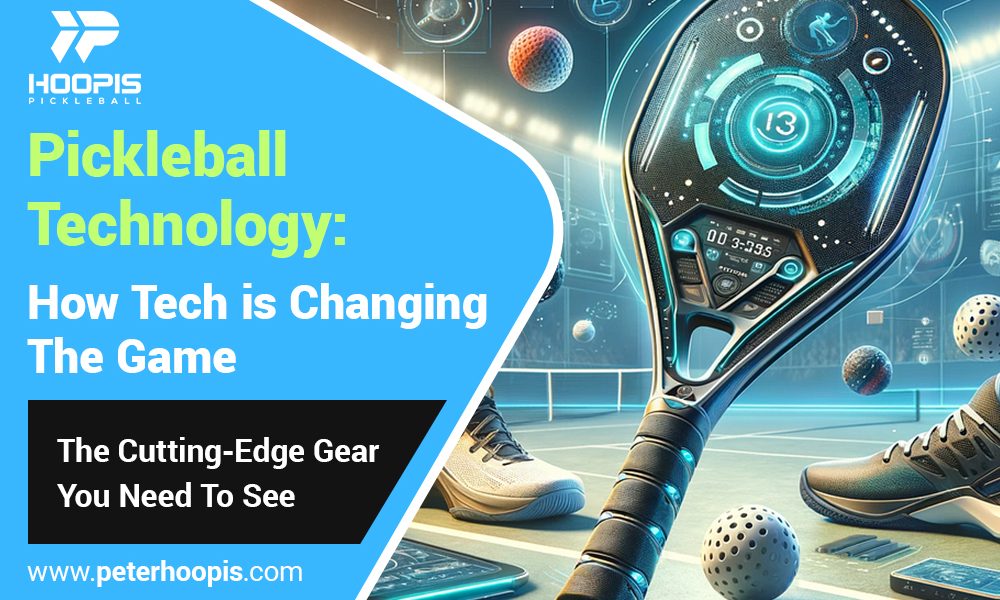In today’s tech-driven world, it seems like every part of life is touched by innovation—sports included. And when it comes to pickleball, one of the fastest-growing sports worldwide, technology is making waves in some pretty exciting ways.
From performance-boosting gear to high-tech training tools, pickleball technology is transforming how players train, strategize, and even enjoy the game. This isn’t just about improving your backhand (though that’s a nice bonus); it’s about changing the entire pickleball experience—on and off the court.
In this post, we’ll dive into how technology is leveling up the sport we love, the advantages it brings, and some of the challenges that come with these changes.
So, grab your paddle, and let’s explore how pickleball technology is shaping the future of the game!
The Evolution of Pickleball Equipment
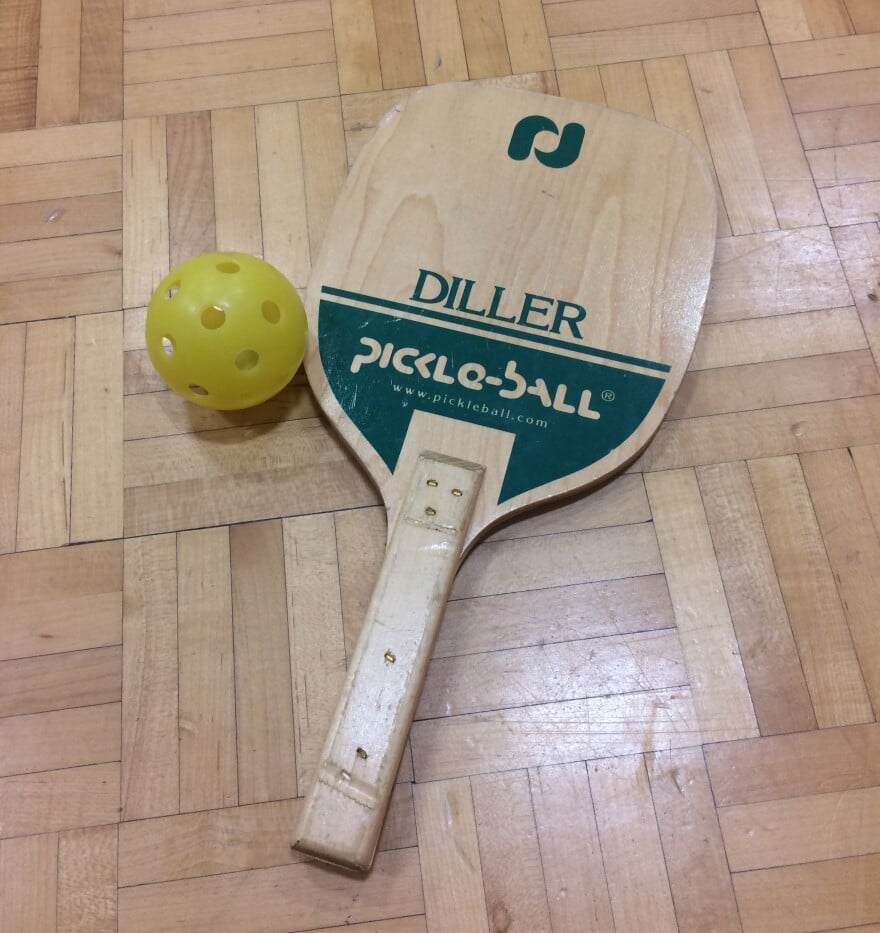
From paddles to balls, courts, and nets, pickleball technology has stepped up to improve performance, durability, and the overall playing experience. Let’s break it down.
Pickleball Paddles
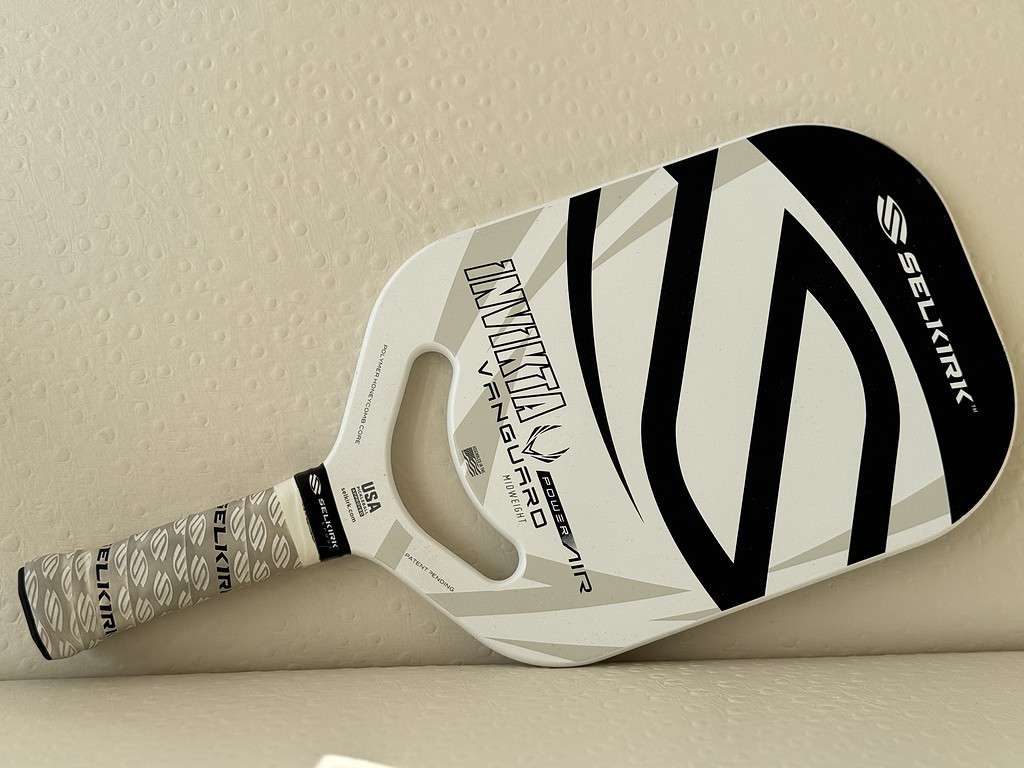
Pickleball paddles have undergone the most significant transformation in the sport’s evolution. What started as simple wooden boards has become a showcase of cutting-edge pickleball paddle technology.
Today’s paddles are crafted from advanced materials like graphite, carbon fiber, and composite blends. Many feature a polypropylene core, designed to give players the perfect mix of power, precision, and control.
But it’s not just about materials—design has evolved, too. Everything from paddle size and weight to grip and aerodynamics is fine-tuned for peak performance. Modern paddles make the difference between just hitting the ball and truly controlling the game. Whether you’re placing a perfect dink or smashing a winner, today’s paddles help elevate your skills and strategy on the court.
Pickleball Balls
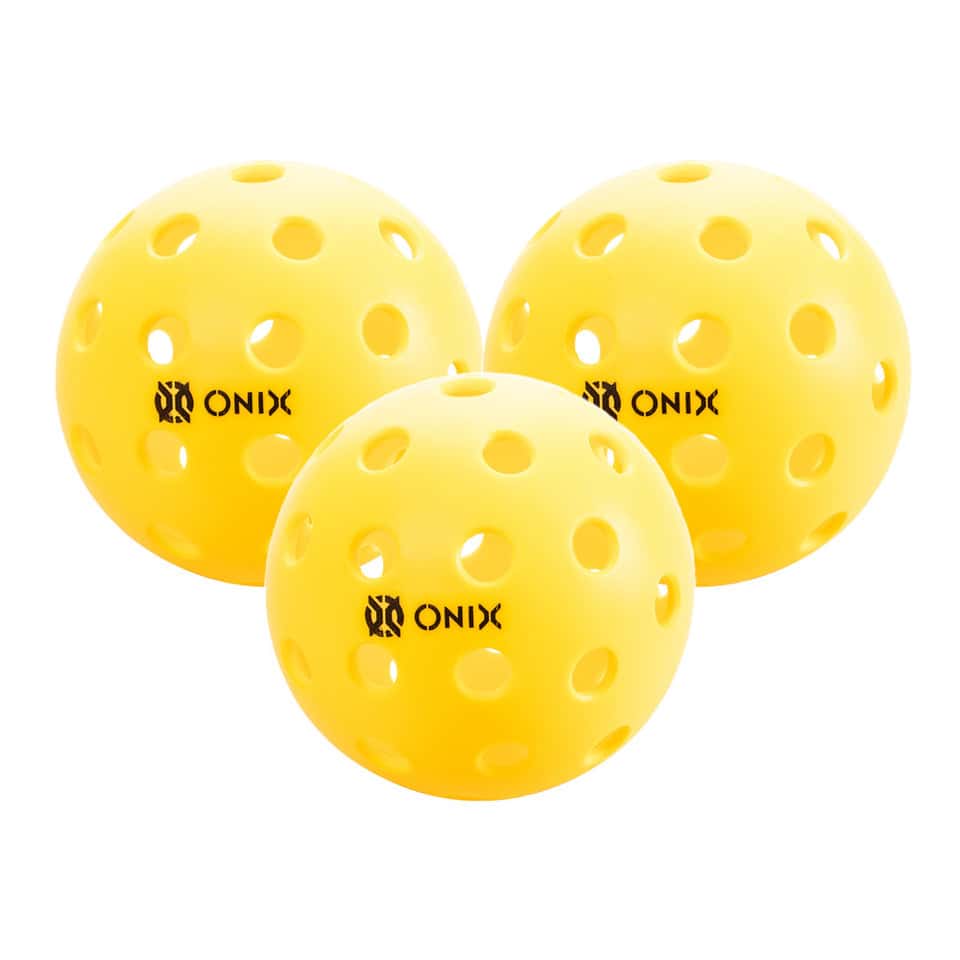
Then there’s the ball. The original wiffle ball has come a long way, evolving into specialized pickleball balls tailored for peak performance on different court surfaces.
Indoor and outdoor balls are designed with unique characteristics, including the number and size of holes. Indoor balls are typically lighter and have fewer holes for softer play, while outdoor balls are heavier and feature more holes to handle wind and rougher surfaces.
It’s no longer a one-size-fits-all game—choosing the right ball can make a big difference in your play style and overall experience on the court.
Pickleball Courts and Pickleball Nets

Let’s not forget about the courts and nets—pickleball technology has improved here as well.
Portable nets have been upgraded with UV-resistant, durable materials that stand up to the elements, ensuring they last through weather and wear. Court surfaces have also evolved, offering better grip while reducing the risk of injury, making the game not only more enjoyable but safer too.
Even the court lines have benefited from new technology, with some facilities using advanced materials that boost visibility and durability for a better overall playing experience.
In a nutshell, technology has not just changed the equipment in pickleball; it’s elevated the entire game. Better gear means better play, and for a sport that’s all about fun and community, that’s a big win.
Wearable Technology and Player Performance

In the world of sports, wearable technology is a game-changer, and pickleball is no exception. It’s no longer just about keeping score—it’s about understanding your game and your body on a whole new level.
Wearable tech has become a staple in sports, from pro athletes to weekend players. Fitness trackers, smartwatches, and other gadgets are doing more than counting steps or monitoring heart rates. They’re delivering valuable insights into performance, health, and training efficiency. And in a sport like pickleball—where agility, endurance, and precision are key—those insights can make all the difference.
Specifically in pickleball, wearables are becoming a big deal. Many players now wear fitness trackers or smartwatches during matches to track everything from steps taken and calories burned to heart rate and even sleep quality.
The real magic, however, lies in the data analysis. By syncing their devices with mobile apps, players gain detailed insights into their performance. They can monitor progress, identify weaknesses, and tailor their training accordingly. For instance, if a player notices they’re tiring during long rallies, they can focus on building cardiovascular endurance or improving muscle strength to handle those intense moments better.
Wearable technology in pickleball isn’t just a trendy add-on—it’s quickly becoming a must-have tool for players looking to elevate their game. It’s all about playing smarter, not harder, and these gadgets are leading the charge.
Apps and Software for Training and Skill Development
In today’s digital age, there’s an app for just about everything—and pickleball is no exception. As the sport’s popularity soars, a wave of specialized apps and software has emerged, offering players tools to elevate their game from the comfort of their smartphones or computers.
Whether you’re a beginner learning the ropes or an advanced player fine-tuning your strategy, these apps have something for everyone. They feature everything from tutorial videos and skill drills to virtual coaching sessions. It’s like having a personal coach on call, anytime, anywhere.
One standout feature is video analysis. These apps let players record their matches or practice sessions and use advanced algorithms to break down strokes, footwork, and positioning. With personalized tips for improvement, players can go beyond correcting mistakes to enhancing their strengths.
Skill drills and strategy tools are equally game-changing. Apps offer tailored drills for all skill levels, covering everything from serving and volleying to perfecting your dinks. Step-by-step guides make solo or partner practice effective and efficient. Strategy tools dive into game tactics, helping players master court positioning, shot selection, and overall gameplay.
And the results speak for themselves. Take the story of a player struggling with serving consistency: by using an app with slow-motion video analysis and targeted drills, they pinpointed flaws in their technique, made corrections, and transformed their serve into a powerful weapon.
These apps and software are revolutionizing how pickleball players train, making advanced tools accessible to everyone. Whether you’re aiming to sharpen your skills or simply enjoy the game more, this technology makes it easier than ever to grow as a player.
Organizational and Social Platforms for Pickleball
As pickleball continues to spike in popularity, technology is transforming not just how the game is played but also how it’s organized and how players connect with each other.
Platforms for organizing games and tournaments have become increasingly sophisticated. Apps and websites like DUPR make it easy to set up games, join local leagues, or register for tournaments with just a few taps. These tools often include features like skill-based matchmaking, location-based game finding, and automated tournament management. For organizers, they simplify everything from registration and scheduling to scorekeeping and bracket creation, making the process smoother for everyone involved.
Technology has also strengthened the community side of pickleball. Social media groups, forums, and online communities are buzzing with players swapping tips, sharing experiences, and coordinating meet-ups. These digital spaces allow pickleball enthusiasts to connect, learn, and build friendships, no matter where they’re located. It’s not just about finding someone to play with—it’s about being part of a global pickleball family.
Beyond organization and socializing, these platforms are helping to grow the sport. Online resources like USA Pickleball provide new players with guidance and encouragement, while seasoned players find challenges and competition. These platforms foster a sense of belonging and inclusivity, allowing the love for pickleball to transcend borders.
In the end, these organizational and community tools aren’t just making it easier to play pickleball—they’re creating connections, expanding opportunities, and bringing people together in ways that make the sport accessible and welcoming to everyone.
Virtual Reality (VR) and Augmented Reality (AR) in Pickleball Training
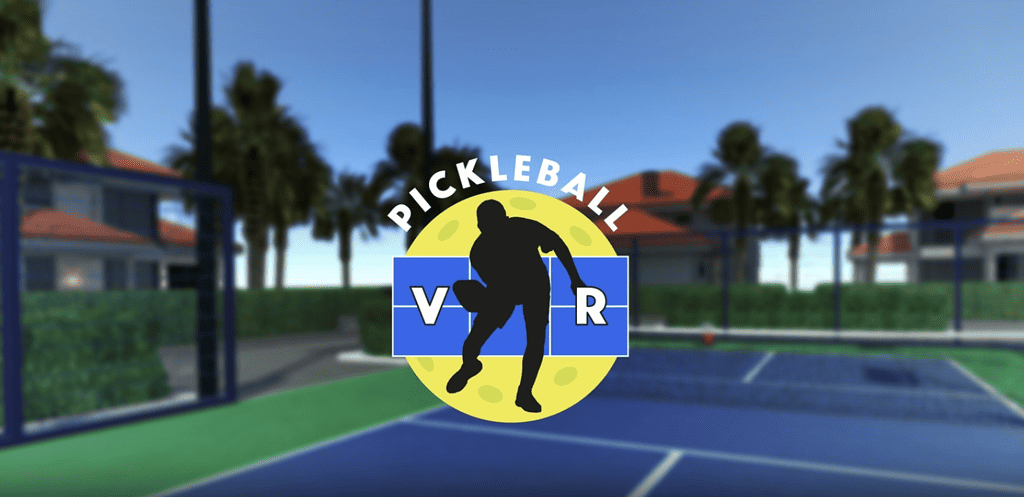
The worlds of VR and AR are no longer just for gamers—they’re now making waves in sports training, including pickleball. These cutting-edge technologies are adding a whole new dimension to how players improve their skills.
- What is VR/AR in Sports Training?
VR provides immersive experiences that mimic real-life play conditions, letting players practice in a controlled but dynamic environment. Imagine stepping into a fully simulated pickleball game, where you can fine-tune your shots and strategies against virtual opponents.AR, on the other hand, overlays digital elements onto the real world. Picture playing on an actual court with virtual targets or obstacles helping guide your movements and improve your accuracy. - How VR and AR Benefit Pickleball Players
- Skill Development with VR: Players can simulate different game scenarios and practice against virtual opponents with varying skill levels and styles. This helps them prepare for real-life matches in a low-pressure environment.
- AR for Precision Training: AR technology can project visual cues onto the court, showing players where to position themselves or how to aim their shots. These interactive elements make training more engaging and effective.
By blending the virtual with the real, VR and AR are revolutionizing pickleball training. Whether it’s strategy, precision, or simply having fun while practicing, these tools are making the process more exciting and impactful than ever.
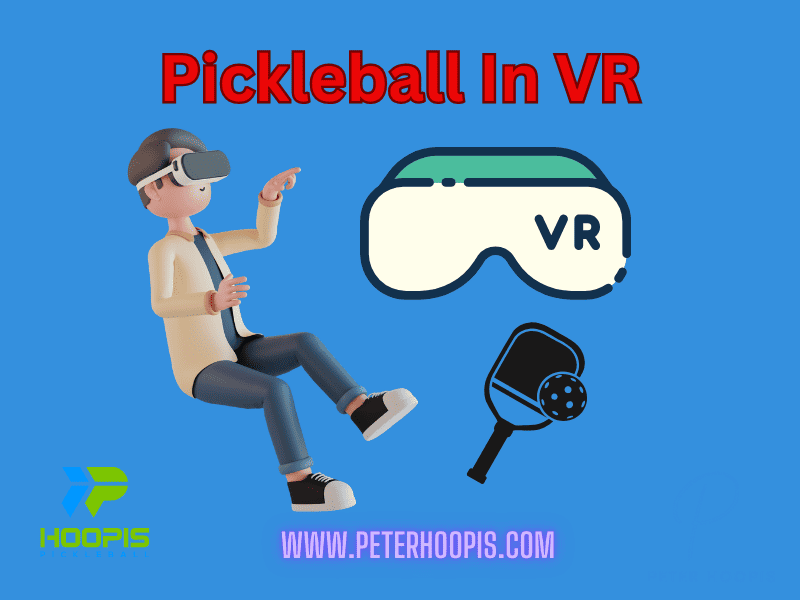
Data Analytics and Performance Metrics

Data Analytics: Transforming Pickleball Through Numbers
The integration of data analytics into pickleball is changing the game—literally. Borrowing from its success in other sports, this data-driven approach is helping players train smarter, strategize better, and perform at their peak.
- What Is Data Analytics in Pickleball?
Data analytics involves collecting and analyzing information—like player performance metrics or game strategies—to gain insights that lead to better results. In team sports, it’s about understanding team dynamics. In individual sports like pickleball, it’s about breaking down every element of a player’s game. - Innovative Applications in Pickleball
- Smart Equipment: Sensors in paddles or balls can track shot speed, spin, and angle.
- Wearable Technology: Devices monitor player movement, endurance, and physical condition.
- Turning Data Into Action: This raw data is analyzed to pinpoint strengths, identify weaknesses, and create actionable strategies for improvement.
- How It Impacts Training and Coaching
- Tailored Training Plans: Coaches can use precise data to customize training programs that target specific areas for improvement. For example, if a player struggles at the net, their drills can focus on improving net play.
- Self-Assessment for Players: Players can review their own data to fine-tune their routines and focus on areas that will give them the most gains.
- Injury Prevention and Recovery: Monitoring physical metrics helps identify overuse risks early, while recovery plans can be optimized using detailed performance data.
- Why It Matters
Data analytics isn’t just about playing better—it’s about playing smarter. By leveraging performance metrics, players and coaches can work more efficiently, maximize training results, and reduce the risk of injuries.
As pickleball continues to grow, the use of data will become even more sophisticated, offering exciting opportunities for player development, smarter coaching, and the overall evolution of the sport.
Challenges and Considerations
As technology continues to reshape pickleball, it’s important to consider the challenges that come with these advancements. While innovation is exciting, addressing these issues is essential for keeping the sport inclusive, fair, and true to its roots.
- Addressing the Digital Divide
Not everyone has equal access to advanced technology. High-tech equipment, wearables, and apps often come with steep price tags, creating a disparity among players. This raises an important question: will players who can’t afford these tools be left behind? Ensuring access to technology for all players—regardless of budget—is crucial to maintaining pickleball’s inclusive and welcoming nature. - Balancing Technology with Tradition
Pickleball has always been about simplicity and social connection. While technology can elevate the game, it’s essential to integrate it in a way that respects the sport’s heritage. The goal should be to enhance the experience without overshadowing the essence of pickleball. Striking this balance will ensure that technology supports the sport rather than dominating it. - Ethical Considerations and Sportsmanship
- Fair Play in Competitive Settings: As performance-enhancing tech becomes more sophisticated, governing bodies may need to define what’s considered fair use in competitive play. Clear guidelines will help maintain a level playing field and preserve the spirit of sportsmanship.
- Privacy and Data Security: With more players using wearable tech and apps, the collection of personal and performance data is increasing. It’s vital to ensure this information is handled securely and ethically, protecting players’ privacy.
- Sustaining the Sport’s Core Values
At the end of the day, pickleball is about enjoyment, community, and accessibility. Technology should complement these values, not detract from them. By addressing these challenges head-on, the sport can evolve sustainably while staying true to what makes it so beloved.
In Summary
Technology offers exciting opportunities for pickleball’s growth, but it comes with responsibilities. By embracing innovation thoughtfully—while prioritizing inclusivity, fairness, and tradition—we can ensure that pickleball remains a sport for everyone to enjoy.
Conclusion: Embracing the Future of Pickleball Technology
The intersection of technology and pickleball is opening up exciting new possibilities, from advanced equipment and wearable tech to data-driven training and immersive virtual experiences. These innovations are transforming how the game is played, coached, and enjoyed, making pickleball more dynamic and accessible than ever before.
However, as we ride this wave of progress, it’s important to remember the heart of pickleball—its simplicity, inclusivity, and the joy of connecting with others on the court. By striking a thoughtful balance between tradition and innovation, we can embrace the best of both worlds.
The future of pickleball technology is bright, and it’s just getting started. Whether you’re a casual player or a competitive enthusiast, there’s never been a better time to step onto the court and explore how technology can elevate your game. Let’s play smarter, stay connected, and keep the spirit of pickleball alive as we move forward together.

